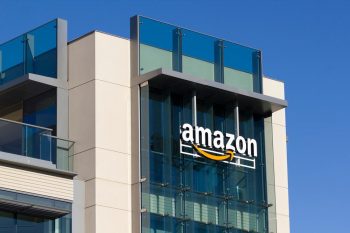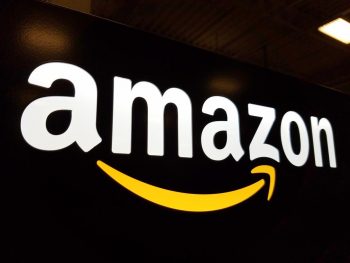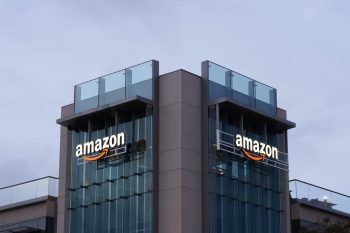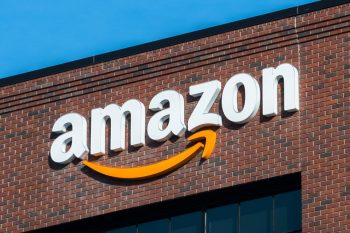
Apple Inc. (AAPL) and Amazon.com Inc. (AMZN) are two of the biggest and most influential companies in the world. Both have revolutionized their respective markets and have consistently shown remarkable growth over the years. Yet, when we look at their stock prices, we see a significant difference. As of the latest available data, Apple’s stock closed at $192.46 while Amazon’s stock closed at $131.10. So why is Apple’s stock cheaper than Amazon’s?
The answer to this question lies in several factors, including their different business models, valuations, market expectations, and financial performances. In this comprehensive article, we will dive deep into these factors to understand why Apple’s stock is cheaper than Amazon’s.
The reason why Apple’s stock is cheaper than Amazon’s is due to several factors. These include their different business models, Apple’s focus on high-quality products and services versus Amazon’s diversified business model. Additionally, the companies have different valuations, with Apple having a higher market cap. The companies’ financial performances, including earnings per share, also play a role, as does investor sentiment and market conditions. Lastly, future growth projections for both companies can influence their stock prices.
Business Models and Their Impact on Stock Prices
Apple and Amazon operate on different business models. Apple is primarily focused on selling its high-quality products and offering services through subscriptions. On the other hand, Amazon has a diversified business model, including its online store, physical stores, Amazon Prime subscription service, and various business units like Amazon Web Services and Amazon Advertising.
The stock prices of both companies can be influenced by various factors, including product releases and financial performance. For Apple, the release of innovative, revenue-driving products or services can impact its stock valuation. However, product releases have not always pushed the share price higher initially.
Amazon’s stock price, on the other hand, has more room for growth. The company’s stock price has been considered highly speculative and volatile due to its high valuation and growth expectations.
Valuations and Market Capitalization
Apple’s market cap as of September 2023 is $2.732 trillion, while Amazon’s is $1.332 trillion. A higher market cap often indicates that the market has confidence in the company’s future prospects, which can lead to higher stock prices. Conversely, a lower market cap may signal that the market has concerns about the company’s growth potential, which can result in lower stock prices.
Earnings Per Share
Earnings per share (EPS) is an important financial metric that investors use to gauge a company’s profitability and potential for growth. A higher EPS generally indicates that a company is generating more profits, which can positively influence its stock value. Conversely, a lower EPS may suggest that a company is struggling to generate profits, which can negatively impact its stock value.
As of June 30, 2023, Apple’s EPS for the twelve months was $5.95, while Amazon’s EPS for the same period was $0.42. This difference in EPS may influence their stock values differently. Apple’s relatively stable and positive EPS growth may be seen as a sign of the company’s consistent profitability and growth potential, which could positively impact its stock value. On the other hand, Amazon’s declining EPS may raise concerns about the company’s profitability and growth prospects, which could negatively affect its stock value.
Investor Sentiment
Investor sentiment plays a significant role in the pricing of Apple and Amazon stocks. Positive sentiment can drive stock prices higher, while negative sentiment can cause prices to decline. For Apple, investor sentiment is generally positive, while Amazon’s stock price has been influenced by its ability to disrupt traditional retail and accelerate the demise of struggling players.
Market Conditions
The overall market condition plays a significant role in the pricing of Apple and Amazon stocks. Factors such as market sentiment, financial performance, growth prospects, and the overall economic environment can all impact stock prices. Weakening macroeconomic conditions can hinder Apple’s sales and affect its stock performance. Conversely, Amazon’s stock price is influenced by factors such as increasing competition, profit potential uncertainty, revenue growth uncertainty, speculative valuation, and share price volatility.
Future Growth Projections
The projected future growths of Apple and Amazon are expected to positively impact their stock prices. Analysts are generally optimistic about both companies’ businesses and stock prices in 2023 and beyond. These growth projections suggest that both Apple and Amazon stocks have the potential for significant appreciation in the coming years.
In conclusion, the reason why Apple’s stock is cheaper than Amazon’s boils down to their different business models, valuations, market expectations, financial performances, investor sentiment, market conditions, and future growth projections. Understanding these factors can help investors make more informed decisions and develop better investment strategies.
Frequently Asked Questions
How do I calculate the earnings per share (EPS)?
Earnings per share (EPS) is calculated by dividing the company’s net income by the total number of outstanding shares. It’s a measure of the company’s profitability on a per-share basis.
What is market capitalization and how is it calculated?
Market capitalization, also known as market cap, is the total dollar market value of a company’s outstanding shares of stock. It is calculated by multiplying the company’s outstanding shares by the current market price of one share.
What is the difference between Apple’s and Amazon’s business models?
Apple’s business model is primarily focused on selling high-end products and offering services through subscriptions. Amazon, on the other hand, has a diversified business model that includes its online store, physical stores, Amazon Prime subscription service, and various business units like Amazon Web Services and Amazon Advertising.
How does investor sentiment affect stock prices?
Investor sentiment can significantly influence stock prices. Positive sentiment, often resulting from good financial performance, innovative products or services, or positive market trends, can drive stock prices higher. Conversely, negative sentiment, which can stem from poor financial performance, lack of innovation, or negative market trends, can drive stock prices down.
What factors might affect the future growth projections of Apple and Amazon?
The future growth projections of Apple and Amazon may be influenced by various factors, including the companies’ financial performance, market conditions, competition, product innovation, and overall economic environment.











